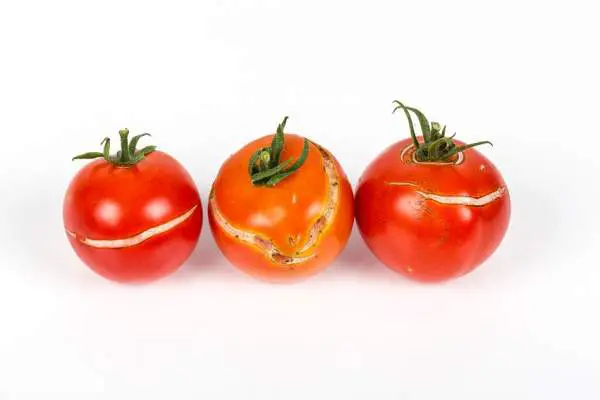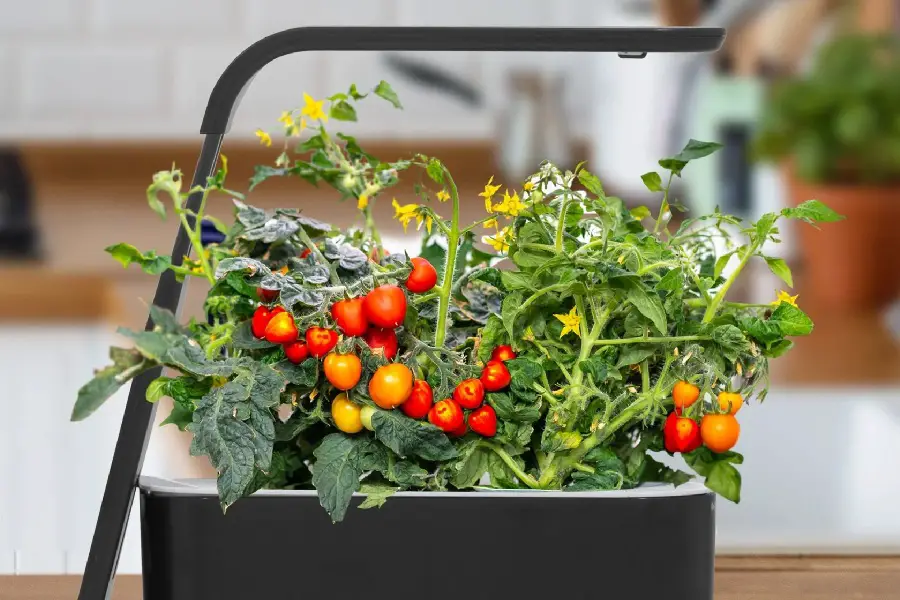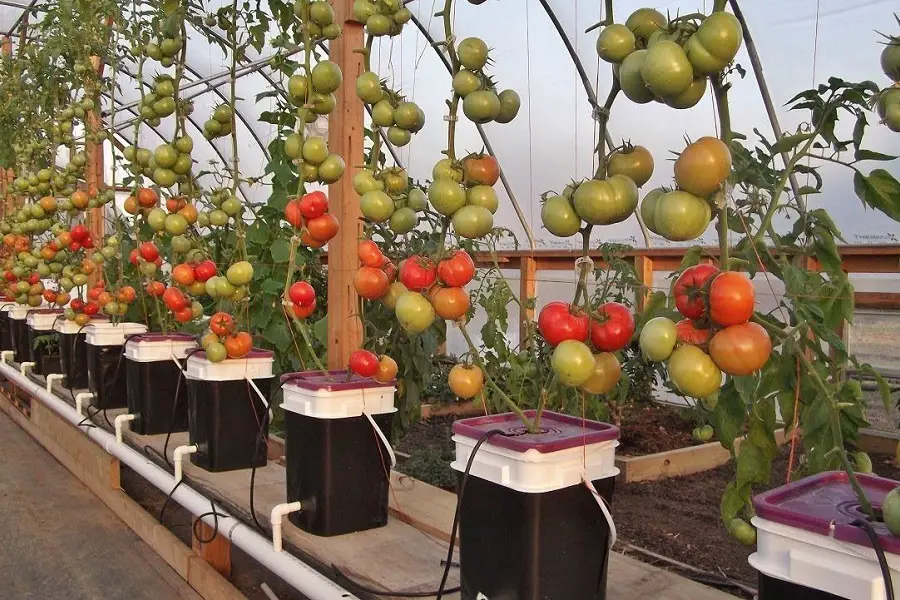One of the best crops any hydroponic grower can grow is fresh tomatoes. These can make a huge dent in any grocery bill, and they are in most cases larger and tastier than store-bought varieties. Not only this but they can be grown throughout the year instead of just being enjoyed throughout the summer months.
One of the most frustrating things for any hydroponic tomatoes grower is to see their fruits ripening nicely, and the next thing they see is they have split.
Here, we will look at the reasons why hydroponic tomatoes split. Gardeners shouldn’t be frustrated and think this is a problem with hydroponics because the exact thing can happen with solid-grown varieties as well.
Before looking at why they split, here is a quick summary of what affects their overall growth, and possible factors that lead to split tomatoes skins.
- Nutrients: Tomatoes require specific nutrients in comparison to other crops. They can be heavy feeders, so they require nutrients they can easily absorb, and have an equal balance, which are nitrogen rich.
- Temperatures: Tomatoes need a temperature of between 55-85 degrees Fahrenheit; they can however handle higher temperatures up to no higher than around 90 degrees Fahrenheit.
- Light: This can be one of the most vital things for good tomato growth. They will need around five or six hours of good strong light, be it sun or artificial lighting.
- Environmental conditions: Tomatoes suffer if they are in windy conditions, vast temperature swings or there are cases of insects or other plant disease. Many of these can be negated in indoor gardening, yet the possibilities are still present.
- Pollination: For growth, fruiting tomatoes do need pollination. If a grower won’t be manually pollinating, they do need to use wind or the presence of insects to do this.
Types of Tomato Splits
Growers can be faced with two different types of splits or cracks on their tomatoes. There you can see here:
- Radial cracking. This type of split will run down the length of the tomato from its stem to the bottom blossoming end of the fruit.
- Concentric cracking. Circular cracking at the top of the tomato and make their way around the stem. These splits don’t appear too appetizing yet they are not as serious as the previous splits.
Growers will find that if their first few tomatoes show splits, then there is a high likelihood that all their fruits will start splitting in the same manner.
Why do tomatoes split?
Tomatoes most often split when they begin to ripen; however, the main reason is they have a huge intake of water. Once they do this, the skins are not elastic enough to allow for these excess fluids and will resist as much as they can before giving way and finally splitting or cracking.
Another reason they can split is a sudden temperature change, the way this causes fruits to split is the increase of gasses inside the fruits. This then has the same issue as too many absorbed fluids, there is no skin elasticity, and splits or cracks form.
One final area where tomatoes are prone to splits is a sudden drop in the EC levels of nutrients. This is more common with outdoor gardens and occurs if it rains heavily for prolonged periods just as the fruits are ripening. This sounds similar to the plants taking on more water, yet it is because the nutrient levels are lower.
You may be thinking about how you can stop tomatoes from absorbing too much water in a hydroponic system. The actual system itself will affect how tomatoes grow because these kinds of plants are not suitable for every kind of system.
Here we will take a look at all you need to know about everything which relates to growing healthy tomatoes without high chances of splitting or cracking.
First, we will look at the best kinds of tomatoes to grow in hydroponics as this also has a bearing on splits and cracks.
Best Hydroponic Tomato Varieties
One of the errors that new growers can make is not understanding the best types of tomatoes to grow. While there are countless varieties, all of these fall under two kinds.
- Determinate: These are bush kinds of tomatoes which rather than growing upward, they spread across the ground. This kind is better for hydroponic growers because they will grow to certain heights, which can be around two to four feet. Once these flower and bear fruits, the growth of the plant will be reduced
- Indeterminate: This kind are what we usually see and are vining plants that like to grow upward. These don’t have any upward limit for their growth, and with the right pruning, there is no limit to the length they can grow, or how much fruit they can bear.
Lighting for Hydroponic Tomatoes
Because tomatoes are often grown outside, they will stop bearing fruits, as the winters get ever closer. Fruit size on tomatoes plants is a direct reflection of the amount of light they receive. This in turn decides the degree of photosynthesis that can occur for each plant, and thus affect the size and quality of fruits.
For good growth, tomatoes like between eight and ten hours per day of light. Nevertheless, some varieties produce high yields when they have up to eighteen hours per day of good light.
Once your plants mature, they need eight hours of darkness so they can fully respire, and following this, you can give plants sixteen hours per day for maximum fruit production.
When it comes to lighting choices, Metal Halides are proven to deliver the best growth because of the powerful light output. Fluorescent tubes and LEDs can be used, yet the growth isn’t as much.
Best Temperatures for Hydroponic Tomatoes
Tomatoes are warm-weather crops, so they like temperatures between 65 and 77 degrees Fahrenheit in the day. They are quite hard and can stand a temperature that falls no lower than 55, or reaches up to 90 degrees Fahrenheit.
Temperatures that fall or rise outside this range can kill tomatoes, so as a grower, you will need to maintain consistent temperatures in this range. One way to be sure you keep these temperatures is by using a grow tent. These enclosed spaces make it easier to warm, easier to control, and more cost-effective to do so.
Nutrients, EC and pH Levels for Hydroponic Systems
Tomatoes are fussy for their requirements, and it is this reason why they are often skipped for new growers. To obtain the best, they do need a few different elements that are in the correct ratios.
Growers can use 3-pack nutrient mixes, yet if they wish to maximize the yields, there are also some specific mixes solely for use with tomatoes, or 2-part mixes which are more geared to these plants.
Tomatoes require high levels of potassium, nitrogen, and phosphorous, and for the pH, they like the range of 5.8 to 6.3 which is a little higher than for other plants. Nutrients will need to be mixed correctly because the EC levels for optimum growth need to be between 2.0 and 3.5 milliMhos.
Tomatoes will show you quickly if they are deficient in anything. By any of the following:
- Yellowing leaves signal low nutrients or high pH
- Curling leaves or red stems are a low pH
- Leaves which curl down are signs of high nutrient levels
- Flowers which begin falling early show a potassium deficiency
Growing Media and Hydroponic Systems
This one area can lead to too much water in your plants. Not only this, but the growing medium will need to deliver support for these plants as they will be heavy once they begin bearing fruits.
- Hydroton clay pellets – used in DWC, NFT and drip systems
- Coco coir – use in passive systems
- Rockwool – ideal for ebb and flow, and drip systems
- Vermiculite and Perlite – Used in drip systems. NFT or can be mixed with any other medium
All systems can be suitable for tomatoes, yet as they feed heavily, and the growers need to be sure they can control the amount of water at harvest time, the best two systems can be the drip system and the flood and drain system.
Both of these are ideal as a grower can have more control over the number of water tomatoes can receive.
Also read: Best Hydroponic Systems for Tomatoes
Conclusion
It can be almost impossible to prevent tomatoes from splitting; yet being on top of everything can reduce the effects. Once they start, it can mean they are prone to rotting and parasites can get inside.
If they split, the good news is they are still edible, although they may not look as appealing. Growers can look forward to healthy fruits, and as soon as they see a sign of any split, it could be a sign to begin harvesting early as this can be one way to be sure they won’t grow any bigger and suffer from this issue.





